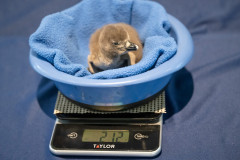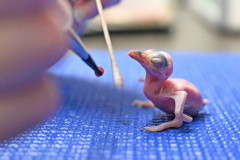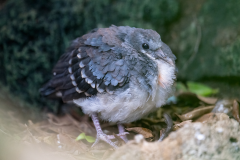Little Wings, Big Future
Safeguarding the Future of Threatened Species
It all begins with a single pip – as a new chick uses its beak to crack the wall of the egg it once called home and takes its first breath in the outside world. What may be just a simple hatching for some represents so much more for those of us who are dedicated to the world of avian conservation.

Several species at the National Aviary are a part of an Association of Zoos and Aquariums (AZA) Species Survival Plan® (SSP) Program. SSP Program participants work together to protect the future of the species within expert care, while also directly applying those efforts to safeguarding their counterparts in the wild. From every range of International Union for Conservation of Nature (IUCN) Status – starting with Least Concern, to Critically Endangered and the dreaded Extinct in the Wild, AZA-accredited SSP Programs offer preventative solutions at every phase.
Give Today!Preserving the Future of Inca Terns
A species can be Least Concern today, and Critically Endangered tomorrow, as is the case with the Hooded Vulture, whose steep population decline only took about two decades (read on below for more). So, while Inca Terns are currently listed as Near Threatened, each and every hatching remains critical for preserving every species. In the wild, this dapper species faces potential population decline in their range along the South American coast due to overfishing and invasive predators encroaching on their habitat. During this year’s Spring and Summer seasons, the National Aviary welcomed the hatchings of not one but TWO Inca Tern chicks to our flock. The chicks (now juveniles) each hatched in quick succession inside of specially designed nest cavities. These crevices, conceptualized by our Animal Care team to mimic the craggily, coastal cliff sides of tern nests in the wild, were built into the Wetlands habitat re-design back in 2022.
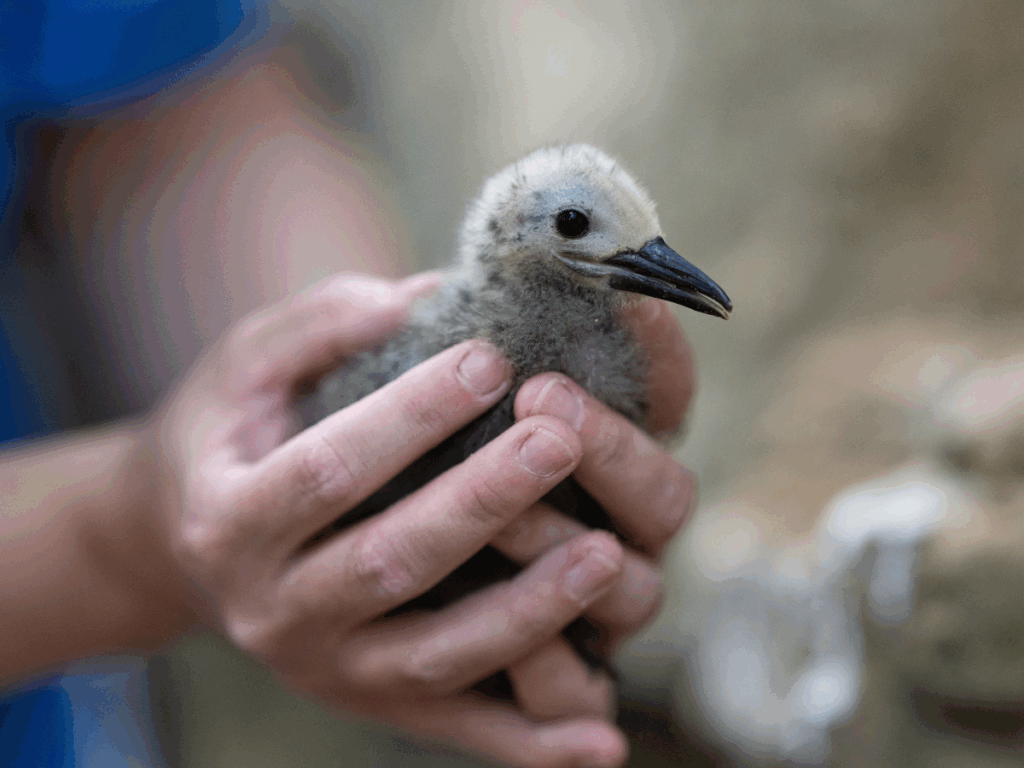
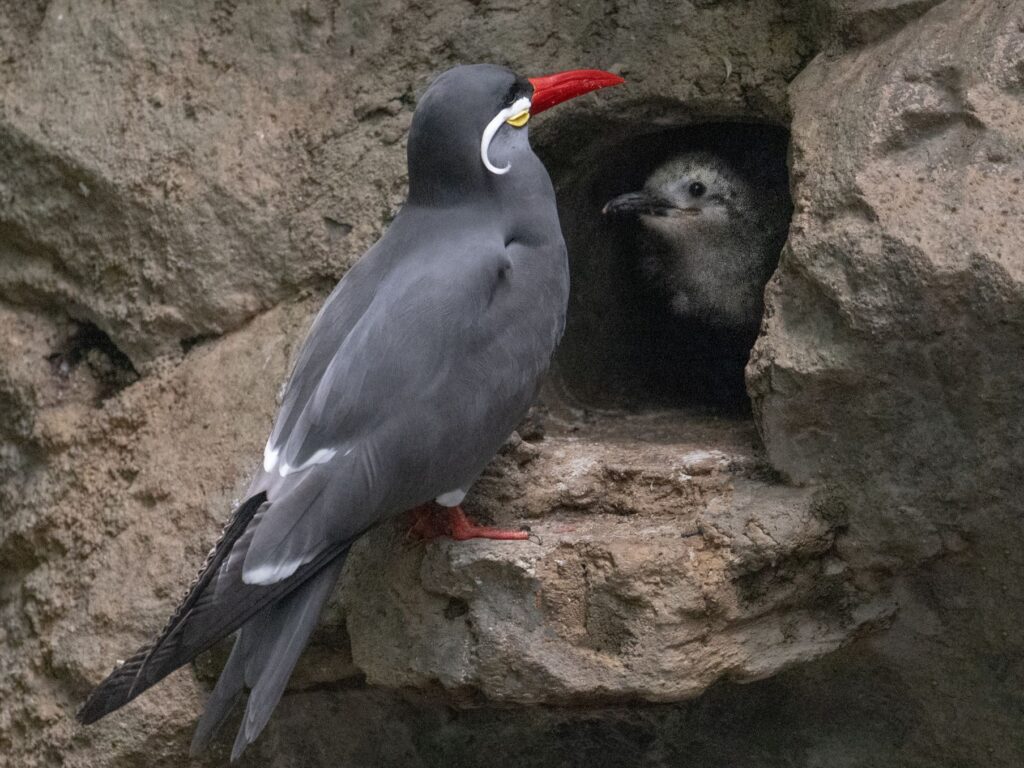
Hatchling One vocalized their first chirp of life May 23, followed by the second on June 25. After a short seven weeks, each youngster fledged the nest and continues to thrive – they traded in their hatchling chirp for the iconic Inca Tern giggle, which guests will hear as they swoop down to enjoy a meal during the twice-daily Whimsical Wetlands: Expert Feeding. While they now stand out in shades of charcoal, over the next two years, the juveniles will begin to develop the same iconic mustachioed “whiskers” and white-and-yellow-coloring that their parents share. The new Inca Terns are not only adorable additions to the Aviary’s flock for guests to interact with but are also a vital part of the AZA-accredited SSP Program for their species who are rarely found in zoos.
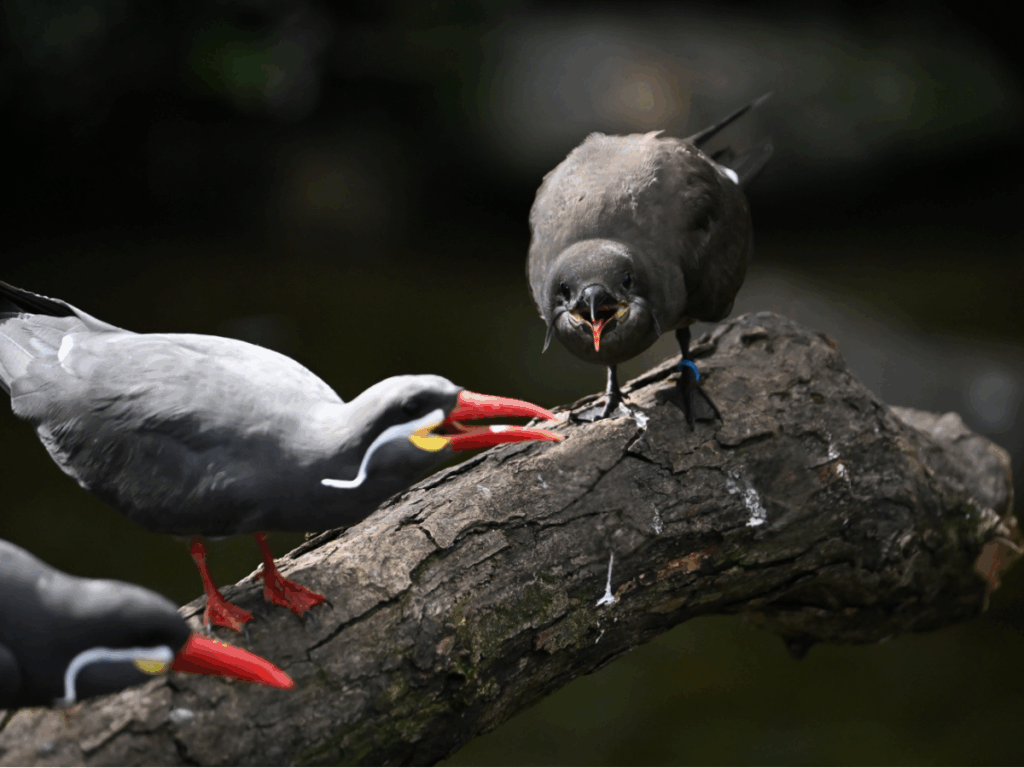
“Guests love watching our feathered-friends like the Inca Terns fly around their habitats, but what some may not know is that a lot of the counterparts for these captivating species are at risk in the wild,” says Senior Aviculturist, Jessica McAtee. “The observations we collect from all the animals living in our care help us work within the survival plan for their species and apply those efforts to help save birds and other animals in wild. The more hatchlings we welcome in human care through accredited breeding programs like the one our Inca Terns are a part of, the stronger our chances are of protecting their overall future.”
Guests can come and witness the unique attributes of the new Inca Tern family during their next National Aviary visit.
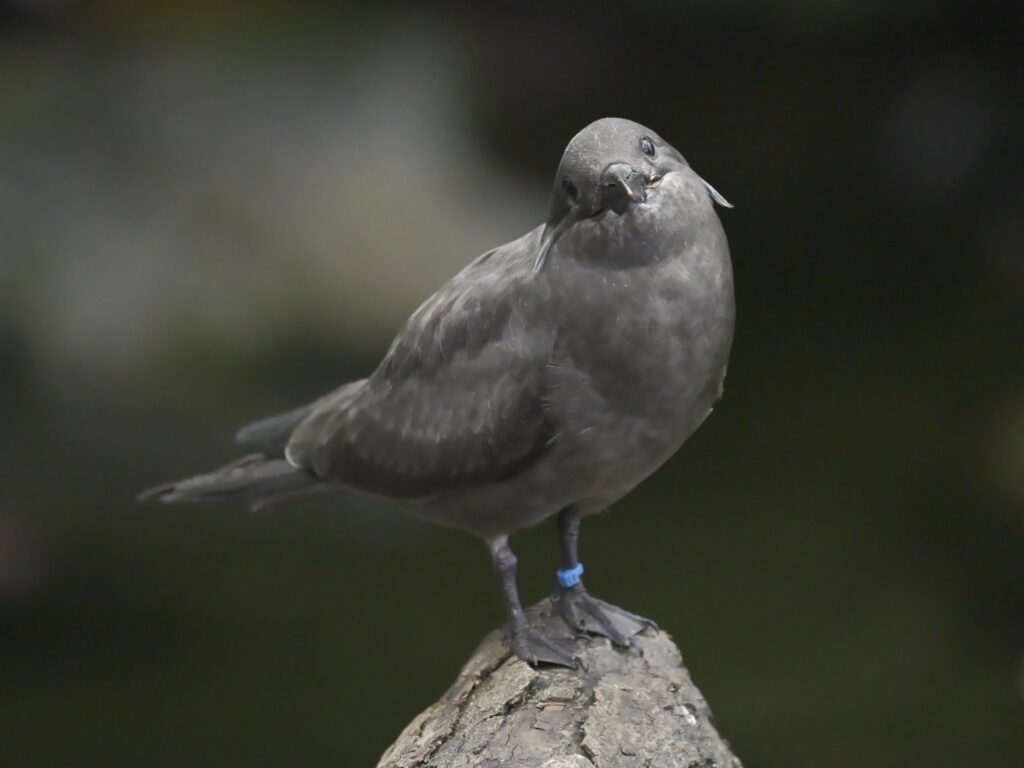

Additional Hatchings of Hope
In addition to the Inca Terns, the National Aviary has welcomed a handful of species in recent years whose hatchings are incredibly important to wildlife preservation.
April 2024 marked the arrival of a Critically Endangered Hooded Vulture chick, who was not only the first of its kind to hatch in the Aviary’s history, but she was also the first for parents Ralf and Opal. The chick, affectionately named Kiara (key-ahr-uh) by Aviary staff, resides in a behind-the-scenes habitat. Kiara’s momentous hatching illustrates the hopeful recovery of her species, which are notoriously difficult to hatch in human care, and who have experienced drastic population decline in the wild due to recent habitat loss and electrical collisions.


Kiara will soon be getting a new habitat-mate. That’s because earlier this year the Aviary announced the hatching of a SECOND Hooded Vulture chick, this time from first-time father Kiume (kee-oo-mah). This hands-on pap always wanted to be a dad – even practicing incubating a few rocks beforehand to prepare! Kiume’s chick recently fledged (and was revealed to be a boy!) and after “learning how to vulture” from Dad. He has now mastered the art of ripping and tearing food, as well as stretching his wings and flying. Stay tuned for his name announcement!
As far as next steps, or “flights,” go, the Hooded Vulture’s care team led by Cathy Schlott, Director of Animal Programs and Experiences, remains hopeful that the two newest Hooded Vultures may one day make a strong genetic match and contribute to the future of the species through an AZA-accredited breeding program within the SSP.
“Hooded Vultures only lay one egg at a time and have a long incubation period of 46-54 days”, says Cathy. “When you have only one egg for a population that is consistently in decline, it makes each and every potential hatching all the more special.”


Each gift to the National Aviary’s Fall Annual Campaign directly supports every new hatchling this year to date, from a young Black Kite training to become an Animal Ambassador behind-the-scenes, African Penguin juveniles Nora and Oswald waddling and swimming around Penguin Point, and Guam Kingfisher chicks who may one day contribute to the ever-growing population in the wild. Securing a lasting tomorrow for species on the brink of extinction – starts TODAY.
Give Today!
